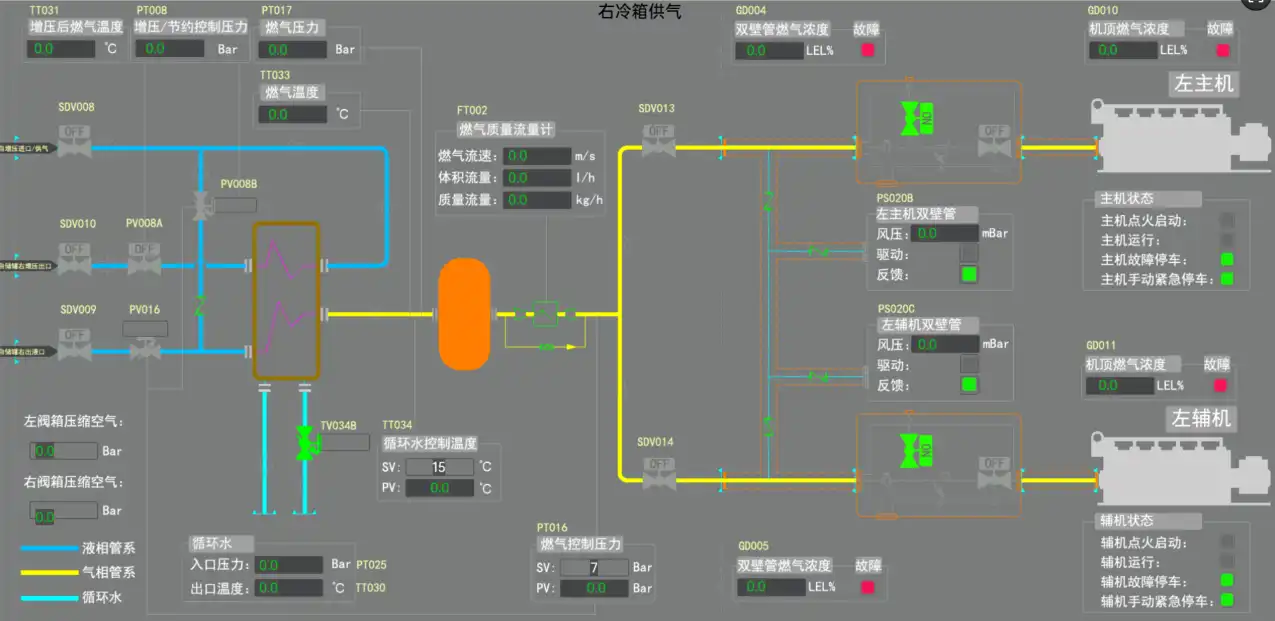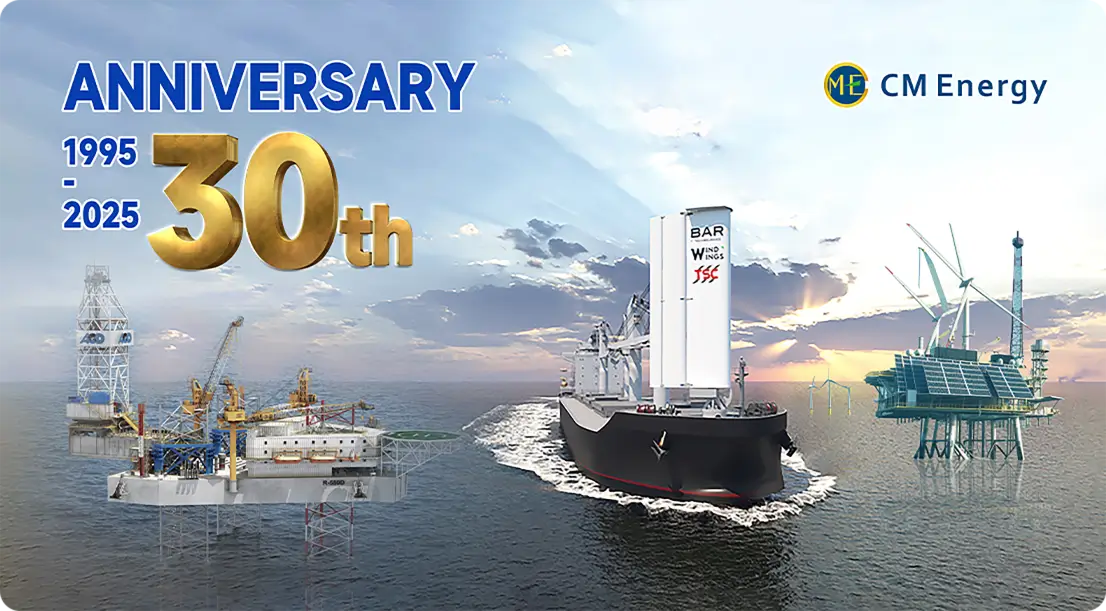Key components driving LNG system costs
LNG storage tanks and insulation
The LNG storage tanks represent a substantial portion of the overall system cost. These specialized tanks must maintain the LNG at cryogenic temperatures (-162°C) and withstand the pressures involved. The size and number of tanks required depend on the vessel's fuel consumption and desired range. High-quality insulation is crucial to minimize boil-off gas and maintain efficiency. TSC's expertise in designing and manufacturing these critical components ensures optimal performance and cost-effectiveness.
Fuel gas supply system
The fuel gas supply system (FGSS) is another major cost factor. This system includes pumps, vaporizers, and control systems necessary to deliver the LNG to the engine at the correct pressure and temperature. The complexity of the FGSS varies depending on the engine type (high-pressure or low-pressure) and the specific requirements of the vessel. CM Energy's advanced FGSS solutions are designed to maximize efficiency and reliability while minimizing operational costs.
Safety systems and monitoring equipment
LNG Fuel Supply Systems require comprehensive safety measures, including gas detection systems, emergency shutdown valves, and ventilation systems. These safety components add to the overall cost but are essential for regulatory compliance and safe operation. Advanced monitoring equipment ensures proper system functioning and helps prevent potential issues, ultimately contributing to long-term cost savings.
Labor and engineering expenses breakdown
Design and engineering costs
The design phase of an LNG fuel system installation involves significant engineering hours. This includes system layout, integration with existing ship systems, and ensuring compliance with relevant regulations. The complexity of retrofitting existing vessels often results in higher engineering costs compared to newbuilds. TSC's experienced engineering team works closely with clients to optimize designs and minimize costs without compromising on quality or safety.
Installation labor expenses
Labor costs for installation can vary widely depending on the shipyard location, complexity of the installation, and the skill level of the workforce. Retrofitting an existing vessel typically requires more labor hours due to the need for removing existing equipment and modifying the ship's structure. Newbuild installations, while generally more straightforward, still require specialized skills and careful planning to ensure proper integration of the LNG Fuel Supply System.
Regulatory compliance and certification
Meeting regulatory requirements and obtaining necessary certifications add to the overall cost of LNG fuel system installations. This includes expenses for inspections, testing, and documentation. While these costs are unavoidable, working with experienced providers like CM Energy can help streamline the process and minimize delays.
Long-term ROI: Balancing initial investment vs. fuel savings
Fuel cost savings over time
The primary driver for adopting LNG Fuel Supply Systems is the potential for significant fuel cost savings. LNG prices have historically been lower and more stable than traditional marine fuels. Over the lifespan of a vessel, these savings can offset the initial installation costs. However, the exact payback period depends on factors such as fuel price differentials, vessel operating profile, and system efficiency.
Maintenance and operational considerations
While LNG systems can offer operational benefits, they also introduce new maintenance requirements. Proper training for crew members and regular system inspections are essential for safe and efficient operation. These ongoing costs should be factored into the long-term financial analysis. TSC's comprehensive support services help customers optimize their maintenance strategies and minimize unexpected downtime.
Environmental compliance and future-proofing
Investing in LNG fuel systems can help shipowners comply with increasingly stringent environmental regulations without the need for additional emissions control equipment. This proactive approach can result in cost savings on future retrofits and potential fines for non-compliance. Additionally, vessels equipped with LNG systems may benefit from preferential port fees and increased charter opportunities, further improving the long-term return on investment.
Conclusion
The installation of an LNG Fuel Supply System represents a significant investment for shipowners and operators. While the initial costs can be substantial, the long-term benefits in terms of fuel savings, environmental compliance, and operational flexibility often justify the expenditure. Key cost factors include the LNG storage tanks, fuel gas supply system, safety equipment, and associated labor and engineering expenses. By carefully considering these elements and working with experienced providers like CM Energy, maritime companies can make informed decisions about adopting LNG technology and optimize their return on investment.
FAQ
1. What is the typical payback period for an LNG fuel system installation?
The payback period varies depending on factors such as vessel type, operating profile, and fuel price differentials. Generally, it ranges from 3 to 7 years, with some high-utilization vessels achieving faster returns.
2. Are there any government incentives available for LNG fuel system installations?
Some countries and regions offer incentives for adopting cleaner marine technologies, including LNG systems. These may include tax credits, grants, or preferential financing. It's essential to check with local authorities for current programs.
3. How does the cost of LNG fuel system installation compare to other emissions reduction technologies?
While LNG systems typically have higher upfront costs compared to some alternatives like scrubbers, they often offer greater long-term benefits in terms of fuel savings and future compliance. A detailed cost-benefit analysis is recommended for each specific case.
Ready to Optimize Your Fleet with LNG Technology?
CM Energy, through its innovative TSC brand, offers state-of-the-art LNG Fuel Supply System solutions tailored to your vessel's specific needs. Our comprehensive approach covers everything from initial design to ongoing support, ensuring maximum efficiency and ROI. With our expertise in LNG technology and commitment to customer satisfaction, we're your ideal partner for navigating the transition to cleaner, more cost-effective marine operations. Contact our team of LNG specialists today to discover how we can help you reduce costs and emissions while future-proofing your fleet. Reach out to us at info.cn@cm-energy.com and take the first step towards a more sustainable and profitable maritime future with CM Energy, your trusted LNG Fuel Supply System manufacturer.
References
- Johnson, M. (2023). "Economic Analysis of LNG Fuel Systems in Maritime Applications". Journal of Marine Engineering & Technology, 42(3), 156-172.
- Smith, A. & Brown, R. (2022). "Cost Factors in LNG Fuel System Installations: A Comparative Study". International Journal of Naval Architecture and Ocean Engineering, 14(2), 301-315.
- Maritime LNG Forum. (2024). "Annual Report on LNG Fuel System Costs and Benefits". London: Maritime Press.
- Lee, S. et al. (2023). "Optimization of LNG Fuel Supply Systems for Various Vessel Types". Ocean Engineering, 215, 108091.
- International Maritime Organization. (2024). "Guidelines on LNG Bunkering and Fuel System Installation". IMO Publishing.
- Wilson, D. (2023). "Return on Investment Analysis for LNG Fuel Systems in Commercial Shipping". Maritime Economics & Logistics, 25(1), 78-95.


